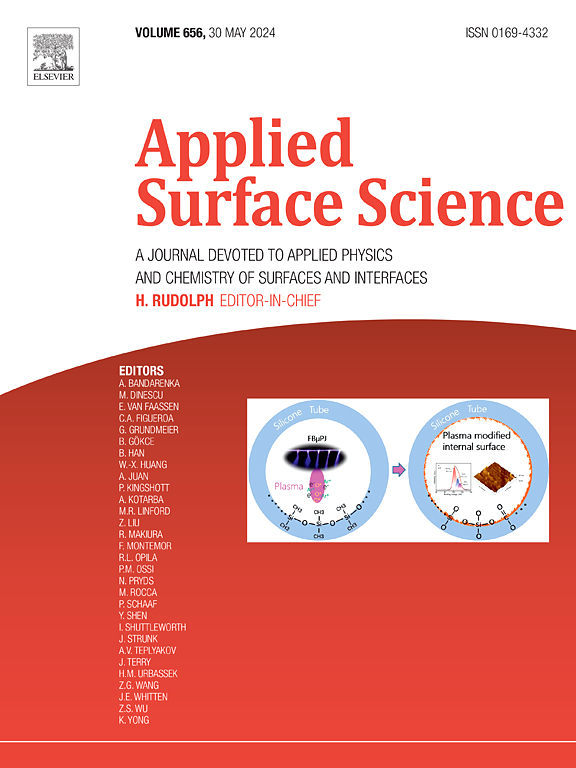Growth mechanism of plasma electrolytic oxidation coating of Zr alloys revealed by layer-specific phase analyses
IF 6.3
2区 材料科学
Q2 CHEMISTRY, PHYSICAL
引用次数: 0
Abstract
The characteristic outward and inward growth modes in plasma electrolytic oxidation (PEO) coatings on lightweight alloys have been previously attributed to a surface deposition process of ejected molten materials (ejection-deposition mechanism), and an oxygen inward diffusion process, respectively. In this study, the growth behavior and layer-specific phase of PEO coating on Zr alloys were investigated to elucidate the underlying formation mechanisms. Microstructural characterization reveals compelling evidence for the ejection-deposition mechanism, with distinct deposition layer around a discharge pore, confirming plasma discharge-mediated upward transport of molten materials drives outward coating growth. Meanwhile, the inward growth involves two key processes: (i) plasma discharge-induced localized melting of metal substrate and (ii) electrochemical migration of ionic species. This conclusion is supported by the presence of a Zr-rich (O-poor) molten product, and a pure ZrO2 layer immediately adjacent to the substrate. Based on these findings, a comprehensive growth mechanism was proposed, encompassing ionic migration, substrate melting, and ejection-deposition processes. Furthermore, the observed phenomena, where increased frequency accelerates coating thickening and prolonged oxidation time enhances inward growth, are well explained by the proposed mechanism.

层相分析揭示了Zr合金等离子体电解氧化涂层的生长机理
轻质合金等离子体电解氧化(PEO)涂层的特征向外和向内生长模式分别归因于喷射熔融材料的表面沉积过程(喷射-沉积机制)和氧气向内扩散过程。在本研究中,研究了Zr合金表面PEO涂层的生长行为和层特异性相,以阐明其形成机制。微观结构表征为喷射-沉积机制提供了令人信服的证据,在放电孔周围有明显的沉积层,证实了等离子体放电介导的熔融材料向上传输驱动了涂层向外生长。同时,向内生长涉及两个关键过程:(1)等离子体放电诱导的金属基体局部熔化和(2)离子种的电化学迁移。这一结论得到了富锆(贫锆)熔融产物和紧挨着基体的纯ZrO2层存在的支持。基于这些发现,提出了一个全面的生长机制,包括离子迁移,衬底熔化和喷射沉积过程。此外,观察到的频率增加加速涂层增厚和延长氧化时间增强向内生长的现象,可以很好地解释所提出的机制。
本文章由计算机程序翻译,如有差异,请以英文原文为准。
求助全文
约1分钟内获得全文
求助全文
来源期刊

Applied Surface Science
工程技术-材料科学:膜
CiteScore
12.50
自引率
7.50%
发文量
3393
审稿时长
67 days
期刊介绍:
Applied Surface Science covers topics contributing to a better understanding of surfaces, interfaces, nanostructures and their applications. The journal is concerned with scientific research on the atomic and molecular level of material properties determined with specific surface analytical techniques and/or computational methods, as well as the processing of such structures.
 求助内容:
求助内容: 应助结果提醒方式:
应助结果提醒方式:


